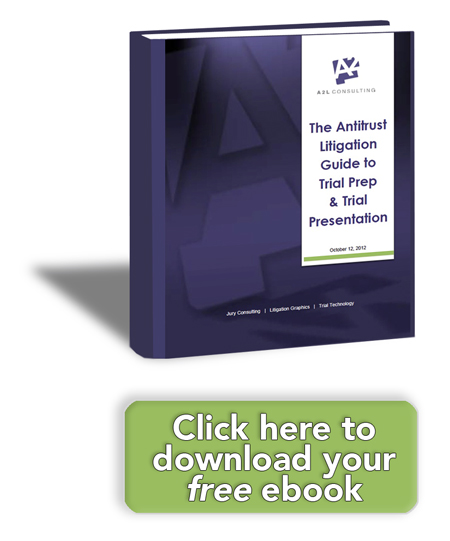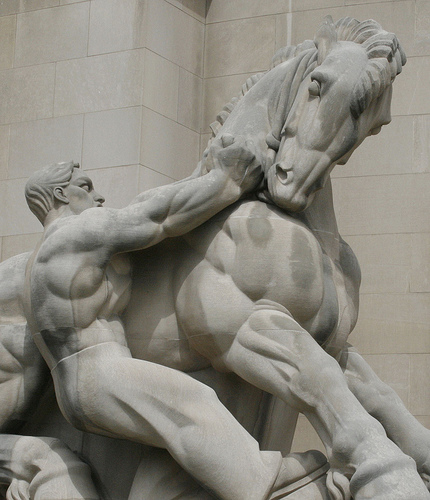 by Ken Lopez
by Ken Lopez
Founder & CEO
A2L Consulting
The antitrust laws have been around for more than 100 years, and they have never been more relevant than they are today. Whether it’s a question of the interplay between patents and antitrust, a hospital merger, a high-tech acquisition, or an alleged conspiracy to fix prices, companies need to know how to defend themselves in antitrust cases. Often, they also need to know how to pursue such cases as a plaintiff as well.
That means that the need for antitrust litigation graphics has never been greater.
This is especially true because antitrust litigation is inherently complex and juries frequently have to decide cases where dollar amounts in the nine or even ten figures are at stake. In addition, corporate executives can be charged with criminal antitrust violations that would likely land them in federal prison if they are convicted.
Antitrust cases that involve antitrust litigation graphics can be brought by the government – including the U.S. Department of Justice, which has the ability to bring criminal antitrust cases; the Federal Trade Commission; and state attorneys general. They can also be brought by private parties that allege that they were injured in their pocketbook by a price-fixing or similar conspiracy or by some other possible antitrust violation.
We work, in different cases, for the government and for corporations that have been accused by the government or by other corporations or individuals of entering into price-fixing conspiracies, engaging in cartel activity, or planning a merger or acquisition.
Antitrust cases require special assistance from people who are familiar with antitrust litigation graphics
 Graphics are particularly relevant since a conspiracy must often be proved by inference because conspirators understandably try not to leave a clear record of their conspiracy. Accordingly, when we are on the side that is trying to show that a conspiracy existed, we create convincing antitrust litigation graphics that set forth the time and participants of key emails and telephone calls from which an illegal conspiracy can be inferred. Courts have made it clear that juries are allowed to infer the existence of a conspiracy from repeated contacts between corporations and the corporations’ behavior at the time.
Graphics are particularly relevant since a conspiracy must often be proved by inference because conspirators understandably try not to leave a clear record of their conspiracy. Accordingly, when we are on the side that is trying to show that a conspiracy existed, we create convincing antitrust litigation graphics that set forth the time and participants of key emails and telephone calls from which an illegal conspiracy can be inferred. Courts have made it clear that juries are allowed to infer the existence of a conspiracy from repeated contacts between corporations and the corporations’ behavior at the time.
There is no reason that jurors cannot be taught complex economic concepts such as those that appear in many antitrust cases. A well-versed trial consulting firm can help any trial team do so. One of the most important means, for example, is to use visuals in the form of photographs, schematics, animation, timelines, demonstrative evidence, or whatever is suited to the situation, and to explain them in ways that jurors who are not economic specialists can understand.
In that connection, we have prepared a 100-page e-book, “The Antitrust Litigation Guide to Trial Preparation and Trial Presentation,” that will help lawyers understand the challenges that they face and some of the ways in which a top trial consulting firm can help them overcome these challenges by creating effective antitrust litigation graphics.
The book features articles on such important subjects as “Antitrust Litigation Graphics: Explaining Complex Information Simply,” “Litigation Graphics: Timelines Can Persuade Judges and Juries,” “Trial Exhibits: Antitrust, Pharmaceuticals, and Hatch-Waxman Litigation,” “Antitrust Litigation Graphics: Monopoly Power and Price Fixing,” and “Making the Complex Understandable in Pharmaceutical Cases.”





Leave a Comment